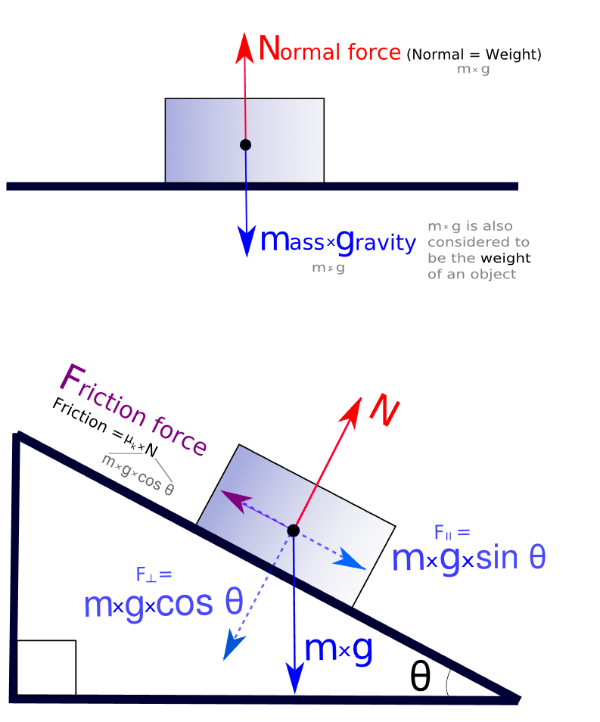How to describe a force
Formula symbol and unit of force
Forces can be described as a push or pull on an object. They can be due to phenomena such as gravity, magnetism, or anything that might cause a mass to accelerate.
In physics, a force is an influence that causes the motion of an object with mass to change its velocity (e.g. moving from a state of rest), i.e., to accelerate. It can be a push or a pull, always with magnitude and direction, making it a vector quantity. It is measured in the SI unit of newton (N) and represented by the symbol F.
The force F is measured in newtons (N). 1 newton (1N) is approximately the force with which a body of mass 100 g (e.g. 100 g) pushes on a stationary support or pulls on a suspension.
The original form of Newton's second law states that the net force acting upon an object is equal to the rate at which its momentum changes with time. If the mass of the object is constant, this law implies that the acceleration of an object is directly proportional to the net force acting on the object, is in the direction of the net force, and is inversely proportional to the mass of the object.
One newton is the magnitude of the force that must be applied to accelerate a stationary body of mass 1 kg uniformly to the speed 1 m/s within one second.
Concepts related to force include:
- Thrust, which increases the velocity of an object; drag, which decreases the velocity of an object; and torque, which produces changes in rotational speed of an object.
- In an extended body, each part usually applies forces on the adjacent parts; the distribution of such forces through the body is the internal mechanical stress. Such internal mechanical stresses cause no acceleration of that body as the forces balance one another.
- Pressure, the distribution of many small forces applied over an area of a body, is a simple type of stress that if unbalanced can cause the body to accelerate. Stress usually causes deformation of solid materials, or flow in fluids.
Free Body Diagrams
Free body diagrams of a block on a flat surface and an inclined plane. Forces are resolved and added together to determine their magnitudes and the net force.
They can be described by a triangle of three vectors.
Example from Wikipedia:


